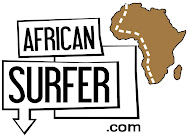The early nineties was an era of change and debuts. People across the world were peeping through the gaps in their fingers, unsure about when it would be safe to look. Too much was happening at the same time:
South Africa held its breath when F.W. De Klerk made the decision to release our country’s future leaders. Many people believed peace and a new beginning would follow the death of apartheid. Many people also bought guns and electric fences in case a civil war erupted.
A hole was discovered in the Earth’s Ozone Layer, which changed the way people apply sun cream to their bodies. The risk of skin cancer became real over night. Suddenly Madonna’s mole wasn’t cool anymore and people were surfing in luminous zink again.
Freddy Mercury died of AIDS. The world was shattered by the loss of such a great talent. Religious folk blamed AIDS on homosexuality and bestiality. Distraught liberals blamed secret organizations and governments for creating the HIV virus. The answer still lies hidden bellow the surface, along with photos of the yeti, extra terrestrials and the map to Atlantis.
The Cold War between Russia and the USA ended. The Berlin Wall was pushed down and Russia entered a brutal recession, making it one of the cheapest tourist destinations for clubbing fundis during the ecstasy boom. At the same time South African forces withdrew from Angola (a war entwined with Russia and the US), and many soldiers returned in pieces.
It was a time when kids got their education around the supper table and on the playground. No one really knew what their parents were talking about at the supper table, and everyone on the playground claimed they did.
“Have you been to Angola?” Little Johnny would ask his friend, Stan, on the swings.
Stan would nod his head, fix his glance on the horizon and say, “John, my parents told me about that place. It’s in England I think. Too far to drive. I heard something a Queen who was a peephole pirate that lived there. Apparently she died.”
“Ja,” answers Johnny, “I’ve heard of it. My uncle Pete went there to fight the Reds. They’re a rugby team, aren’t they?”
Of all the rumors surrounding the wars, turmoil and conflict of the time, there was one issue that split us down the middle: were you a ‘Waxy’ or a ‘Homie’? In the midst of these international changes, two categories redefined and polarized the youth of white suburbia in the Eastern Cape.
Rap and Grunge formed the base of these two groups, in a very Communist Verses Capitalist kind of way.
On one side of the spectrum, Waxies identified with Kurdt Cobain and Layne Stanley’s “I don’t give a hoot about anything” sentiment. Surfers and skateboarders were largely affiliated with the group, drawn in by the music’s sloppy dress sense, poor hygiene and dancing rituals (head banging and moshing). At house parties they were the ones who jumped in the pool, broke chairs and smashed windows. Of course PE wasn’t Seattle, and we were only twelve years old, so when things like that happened parents were called and parties cancelled.
The “Homie” (or Homeboy) subdivision was characterized by the bravado and baggy pants of early nineties white rappers, Vanilla Ice and Snow. The Homies were far superior to the Waxies in dancing ability, but notably less reflexive because of their need to look tough. At house parties they would show up with butterfly knives or nun chucks. Like the waxies and their acts of destruction, their parents would be called and parties would cancelled when these things were found out.
It’s funny how two groups emerged during the era— one group fought the turmoil, the other tried to scare it away. And everyone else just nodded and said, “Jussie, I’m neither of those things,” a bit like apathetic voters.
Subscribe to:
Post Comments (Atom)


No comments:
Post a Comment